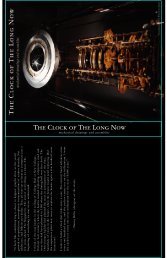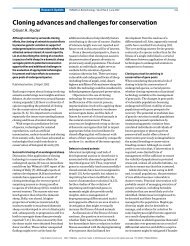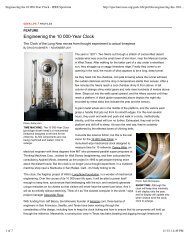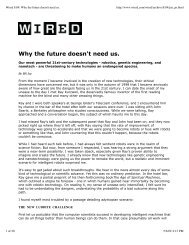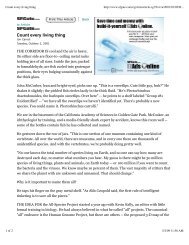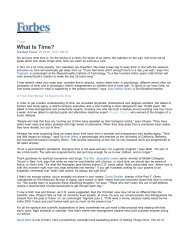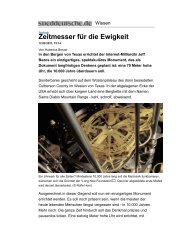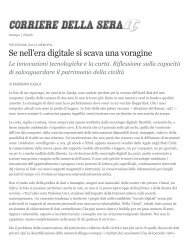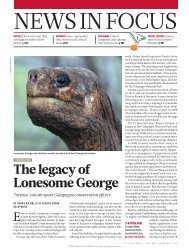PDF Download - The Long Now Foundation
PDF Download - The Long Now Foundation
PDF Download - The Long Now Foundation
You also want an ePaper? Increase the reach of your titles
YUMPU automatically turns print PDFs into web optimized ePapers that Google loves.
Mozart set the standard in his field ...<br />
... It has been said we have as well.<br />
Phone: +1-973-993-1952 Fax: +1-973-538-5615 www.kscables.com<br />
photography: getty images; corbis; p Faligot<br />
photo credit:<br />
six beLLs o’ tHe First dog watcH,<br />
13 may, 1764, barbados<br />
at sea, accuracy is everything. John Harrison, a<br />
carpenter’s son and highly skilled clockmaker,<br />
solved the puzzle of building a timepiece that<br />
would withstand the humidity, damp and shocks<br />
of a long sea voyage and still stay accurate enough<br />
to calculate longitude to within yards. His second<br />
test voyage, to barbados, was final proof that his<br />
creation worked perfectly. as anyone who read the<br />
best-selling book on the subject, <strong>Long</strong>itude, will<br />
know, it took him far longer to solve the puzzle<br />
of getting britain’s establishment to pay him the<br />
promised prize money for his feat of horological<br />
engineering. meanwhile, seafarers, confusingly, were<br />
still telling time by splitting the 24 hour day into<br />
seven watches of eight half-hourly bells each...<br />
right: a rare example of a<br />
decimal timepiece made by<br />
18th century French watchmaker<br />
robert robin<br />
below: a scene from the French<br />
revolution by Jean-Victor schnetz<br />
Left: detail of an oil painting by<br />
thomas King of John Harrison<br />
right: an earlier experimental<br />
effort at keeping accurate time<br />
at sea, built by Harrison in 1735<br />
timepieces<br />
5:68:97, 5 october, 1793, paris<br />
the French revolution came with quite a few good<br />
ideas. However, one of its less successful brainwaves<br />
was the decimal clock. according to a 1793 decree,<br />
this divided the (previously) 24 hour day into 10<br />
hours, each one of 100 minutes, split into 100<br />
seconds. on the surface this was highly logical, but it<br />
quite simply failed to catch on – the population were<br />
just too used to the traditional system, and the cost<br />
of altering all existing clocks and watches, even then,<br />
was prohibitive. a brief attempt at re-starting the<br />
idea was made in 1897, but met the same problems.<br />
Logical? oui. popular? non.<br />
steinway & sons | issUe two 2012 97



